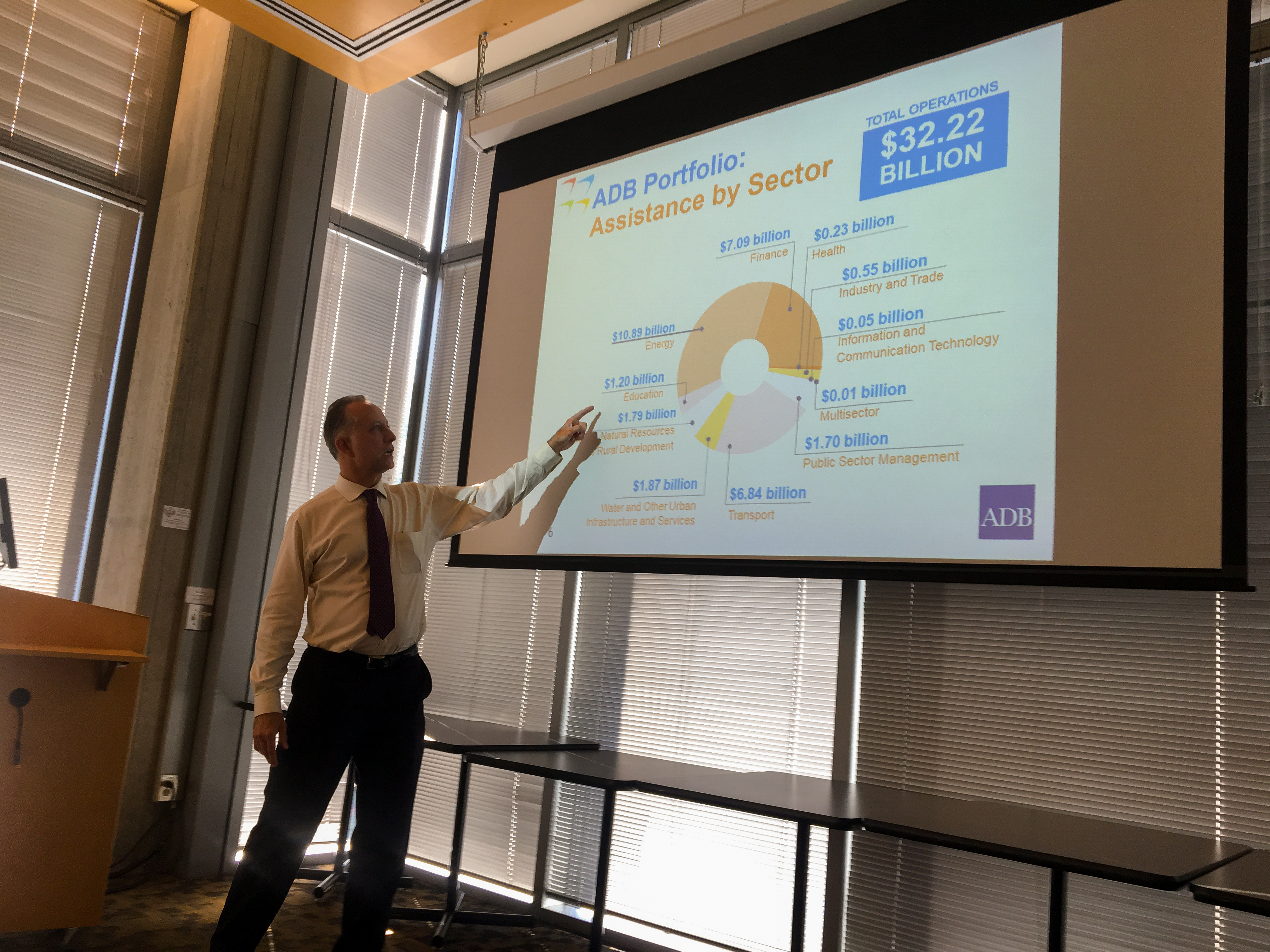Members of the Portland State community gathered in the College of Urban and Public Affairs on Sept. 29 for a presentation from Bart W. Édes, North American representative to the Asian Development Bank, in which he described ADB’s role while answering questions.
Unlike private, commercial banks, the ADP is an international, multilateral organization owned by 67 governments, 70 percent of which are in Asia and the Pacific. The ADP provides financing for infrastructure—such as improving irrigation, building roads and throughways, or providing electricity—in order to assist developing countries, predominantly through the issuing of loans and sometimes grants. Additionally, ADP provides capacity development; meaning, they provide advice along with financial aid in order to assist countries achieve their own development objectives.
“In terms of examples, the areas we work in most frequently are transportation, energy, and water and sanitation sectors but we also work in softer areas like education and health,” Édes said. “We have a big new project coming in Bhutan…to expand healthcare to provide access to people in mountainous areas of that country.”
Édes spoke on the possible effects of current trade relations between the United States and China, such as trade diversion. “One of the risks to Asia, to its economic growth in the next few months is what happens next. There’s the threat there will be more tariffs, so not only these tariffs that have been applied by both sides continue, but that the U.S. for example might apply higher tariffs into a broader set of Chinese goods.” Though tariffs and the subsequent trade diversions have not had a major effect on the region, the impacts may play a greater role depending on how the situation continues.
Édes described China’s economy as transitioning, saying, “They’re putting more emphasis on building up their services sector, finance sector, tourism, hospitality, other services, and generating domestic consumption, not relying only on exports. Their model is changing and in the process the economic growth continues at a high rate but a little slower rate. They’re trying to find a good balance.”
On Sept. 26, the ADB published its economic analysis of the region in the 2018 Asian Development Outlook Update, which projects China’s markets to slow from 6.9 percent in 2017 to 6.6 percent in 2018, decreasing even further to 6.3 percent the following year. Though the markets are slowing down, the effects are estimated to be negligible as the economy in China matures. “[The China Securities Regulatory Commission] estimated the worst case scenario if the tariffs keep increasing and covering more products,” Édes said. “It would cost 0.7 percent of their GDP…it’s a big hit but it doesn’t wipe out all the growth for the year.”
Based on data from the World Bank, the GDP of the United States only grew 2.3 percent in 2017 compared to China’s 6.9, a difference which is emblematic of where the respective countries stand in development. “Many parts of eastern China have become really developed, and if you’re driving down a major street in Shanghai, it’s as developed or even more developed than parts of the U.S,” said Édes before describing the stark difference with China’s rural areas.
Recently, the Trump administration imposed another round of tariffs on China amounting to $200 billion, adding more fuel to the already heightened tensions between Washington, D.C. and Beijing trade relations. China responded by imposing tariffs equalling $60 billion, with Vice Minister of Commerce Wang Shouwen comparing U.S. actions to “holding a knife to someone’s throat,” as reported by Al Jazeera.
As world leaders attended the United Nations General Assembly this week in New York, Prime Minister of Malaysia Mahathir Mohamad criticized the diminishing trade relations between the two nations, saying, “the rest of the world is feeling the pain.”
Though many of the effects of decreased relations are dangerous, the conflict between China and the U.S. is spurring greater regional cooperation within Asia, such as in the case of the Trans-Pacific Partnership, which was signed by 11 members, seven of which are in Asia and the Pacific.
According to a Sept. 30 article from the Financial Times, the U.S. has imposed a 10 percent tax on Chinese goods, with the possibility of raising them to a massive 25 percent in 2019. However, with the shifting dynamics between the U.S. and China in international relations, it’s unclear what the outcome will look like. “You’ve got 1.3 billion people in an economy that’s completely restructuring. A mature economy like the U.S. or Germany, or Canada or New Zealand—these are changing too but a little bit each day. China’s changing dramatically in the space of ten, twenty, thirty years.






